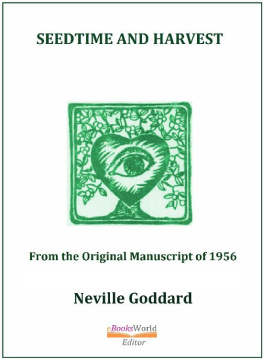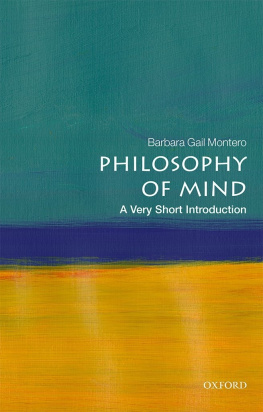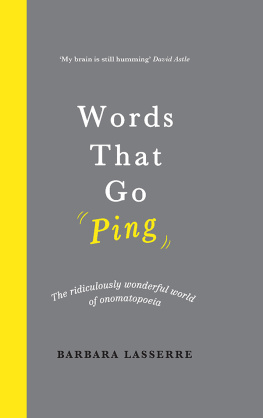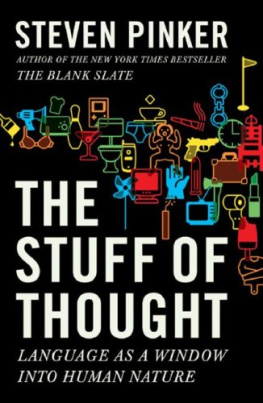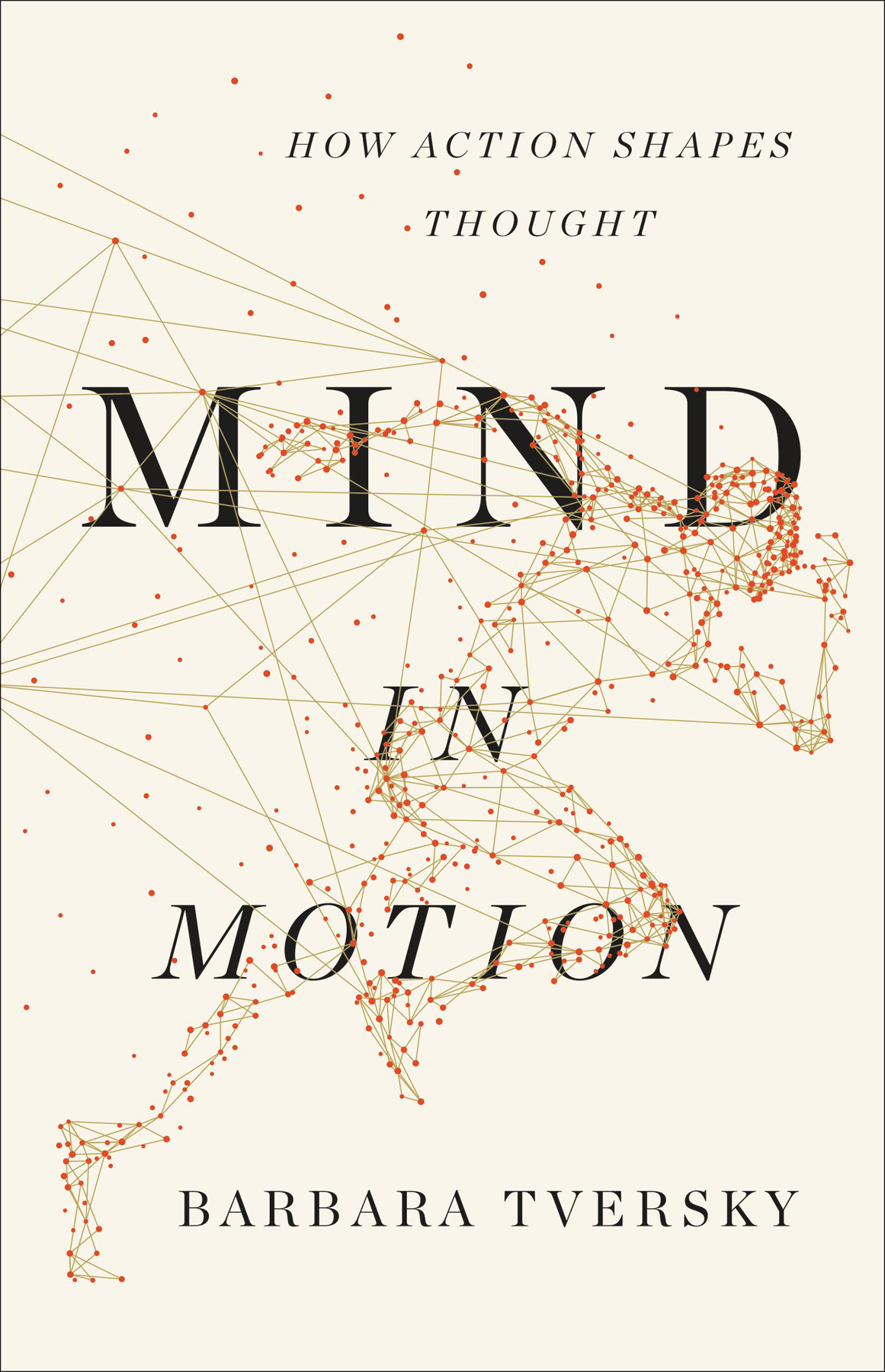Copyright 2019 by Barbara Tversky
Cover design by Chin-Yee Lai
Cover image Liu Zishan/Shutterstock.com
Cover copyright 2019 Hachette Book Group, Inc.
Hachette Book Group supports the right to free expression and the value of copyright. The purpose of copyright is to encourage writers and artists to produce the creative works that enrich our culture.
The scanning, uploading, and distribution of this book without permission is a theft of the authors intellectual property. If you would like permission to use material from the book (other than for review purposes), please contact permissions@hbgusa.com. Thank you for your support of the authors rights.
Basic Books
Hachette Book Group
1290 Avenue of the Americas, New York, NY 10104
www.basicbooks.com
First Edition: May 2019
Published by Basic Books, an imprint of Perseus Books, LLC, a subsidiary of Hachette Book Group, Inc. The Basic Books name and logo is a trademark of the Hachette Book Group.
The Hachette Speakers Bureau provides a wide range of authors for speaking events. To find out more, go to www.hachettespeakersbureau.com or call (866) 376-6591.
The publisher is not responsible for websites (or their content) that are not owned by the publisher.
Library of Congress Cataloging-in-Publication Data
Names: Tversky, Barbara Gans, author.
Title: Mind in motion: how action shapes thought / Barbara Tversky.
Description: New York: Basic Books, [2019] | Includes bibliographical references and index.
Identifiers: LCCN 2019007927| ISBN 9780465093069 (hardcover) | ISBN 9780465093076 (ebook)
Subjects: LCSH: Thought and thinking. | Intellect. | Space. | Cognition.
Classification: LCC BF441 .T94 2019 | DDC 153.4dc23
LC record available at https://lccn.loc.gov/2019007927
ISBNs: 978-0-465-09306-9 (hardcover); 978-0-465-09307-6 (ebook)
E3-20190417-JV-NF-ORI
To Amos, whose mind was always in motion.
Explore book giveaways, sneak peeks, deals, and more.
Tap here to learn more.

A creature didnt think in order to move; it just moved, and by moving it discovered the world that then formed the content of its thoughts.
L ARISSA M AC F ARQUHAR, The mind-expanding ideas of Andy Clark, The New Yorker
E VERYTHING IS ALWAYS IN MOTION. PHYSICISTS TELL US THAT IF the quivering molecules in your desk moved in sync, the desk would leap from the floor. Even sedentary plants grow and sway and turn toward the sun and open and close. They have to; they would die if they didnt move. Space places two fundamental constraints on movement, constraints that are reflected in thought: proximitynear places are easier to get to than far ones; and gravitygoing up is more effortful than going down.
Thought, too, is constantly moving, and sometimes hard to catch. Ideas leapfrog over ideas. But there it is: idea. Ive frozen it, reified it into something static, the only way to catch it. From the never-ceasing flux around us, we carve entities out of space and out of time: people, places, things, events. We freeze them, turn them into words and concepts. We change those moving things into static things so that we can act on them with our minds.
Constant motion in space is a given, the background for everything that has happened and that will happen. No wonder it is the foundation of thought. Action in space came long before language, as did thought based on action in space.
Our actions in space change space, change ourselves, and change others. Our actions create things we put in space that change us and others. They change our thought and the thought of others. The things we create (like these words) stay there, in space, changing the thought of people we will never know and cant even imagine.
We dont just freeze the stuff in space and time. We study its form and look for its structure: in our bodies, in our actions and reactions, in the world, in the events that happen in the world, in the language we speak. We find the parts and how they connect to form a whole. The parts and how they fit together tell us what the things can do and what can be done with them. We look for patterns, lines, circles, shapes, branching. We create structure, too, in actions, in talk, in communities, in science, in artpainting, sculpture, film, dance, poetry, drama, opera, journalism, fiction, music. Structure is what holds the pieces together; without structure, things fall apart. And sometimes we do just that, deconstruct and even destroy, to see what happens, to shake things up, to find new structures. Pick Up Sticks. Rearrange the furniture. Reorganize the company. Select musical notes from a random number table. Read Hopscotch in any order. Revolt. Spew chaos on the world.
Prose is linear, one word after another. Narratives have a linear structure driven by time, theories have a linear structure directed by logic. In theory, that is. The structure of Perecs Life: A Users Manual is place, an apartment building and a puzzle, not time. The linearity of prose doesnt harness readers, they can jump back and forth. Speaking is linear, one word after another, but that doesnt stop speakers from interrupting themselves with tangential thoughts nor does it stop listeners from doing the same. Then there are our own thoughts, frequently articulated in inner speech; they hardly walk a straight line and sometimes fly out in too many directions at once. Music is linear in time but spatial over the instruments, which can come in at different times and play different notes at different paces and places. Painting has composition, not linear, but center and periphery. Until Pollack and Rothko. Structure is complicated. It gets done, undone, and redone.
Pleas, plays, sermons, campaign speeches. Like music, they zig and zag between the earthly and the lofty, the logical and the emotional, stories that become parables with messages; they zig and zag emotionally, pensive, spirited, ominous, wistful, joyful. They change pace, slow and ponderous, fast and light. Narrative does that, too.
Formal gardens are arranged in perfectly symmetric patterns, with distinct straight paths among the beds of flowers and pruned trees; everything is clear and certain; dont dare go off the paths. Chinese gardens are different. The paths curve and twist this way and that, up and down, always new vistas around the bend pulling you onward; little is clear, nothing certain; you get lost, and then found.
Writing a book makes you, or me, think of structure. There is structure to this book, but you dont have to stay on the paths, you are free to explore it like a Chinese garden rather than a formal one. The book means to show how we think about space and how we use space to think. These are the two parts of the book. The premise is audacious: spatial thinking, rooted in perception of space and action in it, is the foundation for all thought. The foundation, not the entire edifice. Try describing the faces of friends, places you love, events that were meaningful. The memories and images may be vivid, but words flail and fail to capture them. Think about rearranging the furniture in your living room or how to fold a sweater or how many windows were in your childhood home or where the X key is on the keyboard. You might feel your eyes moving or your body squirming. Words alone wont do it.


